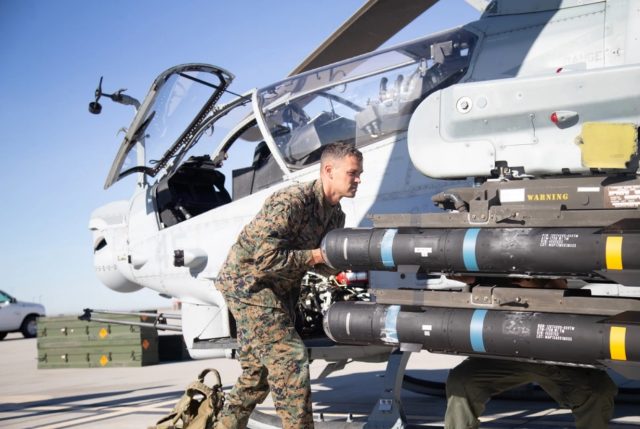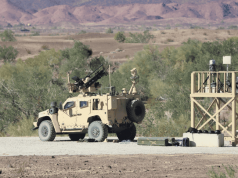
The US Marine Corps’ AH-1Z Viper got a lethality boost with the declaration of initial operating capability (IOC) for the AGM-179A Joint Air-to-Ground Missile (JAGM) on the attack helicopter.
JAGM, a joint program with the US Army, is a precision-guided missile that combines semi-active laser guidance and millimeter-wave radar. It is an air-to-surface precision-guided munition (PGM) used on joint rotary-wing, unmanned aircraft systems, and fixed-wing platforms to destroy high-value, stationary and moving, land and maritime targets.
The IOC, effective from March 1, follows a series of trials the missile and the helicopter underwent in November and December last year.
The JAGM program successfully completed an initial operational test and evaluation period with a recommendation to field the missile. AH-1Z pilots tested JAGM off the coast of Florida in November 2021 and conducted land-based testing in Arizona in December 2021.
IOC was achieved with missiles, training, and support equipment delivered to Marine Light Attack Helicopter Squadron 267 to support an upcoming deployment with the 13th Marine Expeditionary Unit.
“IOC marks a major milestone for the JAGM program and significant increase in capability for the AH-1Z,” said Cmdr. J. Reid Adams, deputy program manager for precision-guided missiles. “This accomplishment is a true testament of the tireless efforts made by so many across DoD and our industry partners to support the warfighter.”
“Incorporating systems such as JAGM on the AH-1Z is essential in keeping the platform at the forefront of warfighting capabilities,” said Col. Vasilios Pappas, USMC H-1 light/attack helicopter program manager.
JAGM provides improved lethality, operational flexibility, and a reduced logistics footprint to the H-1 platform. It is part of an effort to upgrade the AH-1Z and UH-1Y aircraft in alignment with the Commandant’s vision of force modernization to maintain a competitive edge against potential adversaries.


























